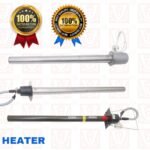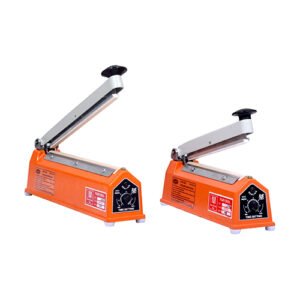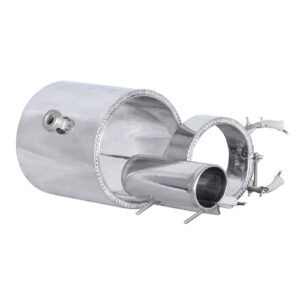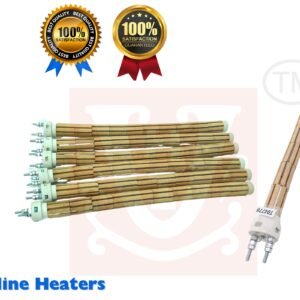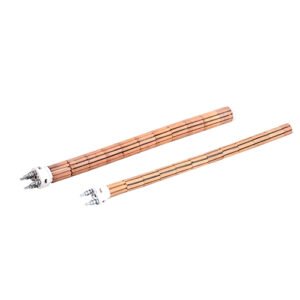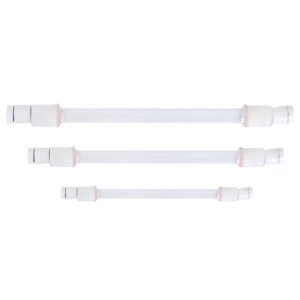Glass Immersion Heater
Construction
Silica Immersion Heater – Construction
-
Sheath: Made of high-purity fused silica (quartz) for excellent acid resistance.
-
Heating Element: Nichrome or Kanthal wire enclosed inside the silica tube.
-
Insulation: Ceramic or refractory material to prevent heat loss.
-
Power Leads: High-temperature resistant cables with protective coverings.
-
Mounting: Available with flanges, hooks, or brackets for secure installation.
- Description
Description
A Silica Immersion Heater is a type of electric heater used for heating acidic and highly corrosive liquids. It is widely used in electroplating, anodizing, and chemical processing industries.
Key Features of Silica Immersion Heaters:
-
Corrosion Resistance: Made from high-purity silica, these heaters resist strong acids like sulfuric, nitric, and hydrochloric acids.
-
Efficient Heating: Provides uniform and fast heating with high thermal conductivity.
-
Non-Contaminating: The silica sheath prevents contamination of the liquid being heated.
-
Long Service Life: Designed to withstand harsh chemical environments, ensuring durability.
-
Customizable Options: Available in different wattages, voltages, and sizes to suit various industrial applications.
Applications:
-
Electroplating and anodizing tanks
-
Acid pickling baths
-
Chemical processing industries
-
Metal finishing and surface treatment
ADVANTAGES
APPLICATION
1. General Specifications
2. Mechanical & Electrical Details
|
|---|
To place an order or request more details, please provide the following information:
1. Required Specifications
-
Voltage: (230V / 415V / Custom)
-
Power Rating: (0.5 kW – 3 kW)
-
Immersion Length: (Specify in mm or inches)
-
Mounting Type: (Flange / Hook / Bracket)
-
Application: (Electroplating, Acid Pickling, etc.)
2. Additional Customization (If Needed)
-
Lead Wire Length: (Specify in meters)
-
Special Coatings or Insulation: (If required)
-
Operating Environment: (Specify chemical type & concentration)
ORDERING INFORMATION
Installation Steps:
-
Check Compatibility: Ensure the heater matches the tank size, liquid type, and electrical supply.
-
Mount Securely: Use a flange, hook, or bracket to position the heater properly inside the tank. Avoid contact with tank walls.
-
Proper Wiring: Connect the heater to the power source using heat-resistant cables. Ensure a proper grounding connection for safety.
-
Liquid Submersion: The heater must be fully immersed in the liquid before switching on to prevent dry firing.
-
Temperature Control: Use a thermostat or temperature controller to regulate heat and prevent overheating.
-
Power On & Test: After installation, turn on the heater and monitor for uniform heating.
Maintenance Tips:
✔ Regular Inspection: Check for cracks or damage to the silica sheath.
✔ Cleaning: If deposits form on the heater, clean using a soft brush or chemical solution suitable for the liquid.
✔ Avoid Dry Operation: Never operate the heater without liquid, as it may cause overheating and failure.
✔ Check Wiring: Periodically inspect power leads for damage or wear and replace if necessary.
✔ Monitor Performance: If heating efficiency drops, check for scaling or contamination on the heater surface.








